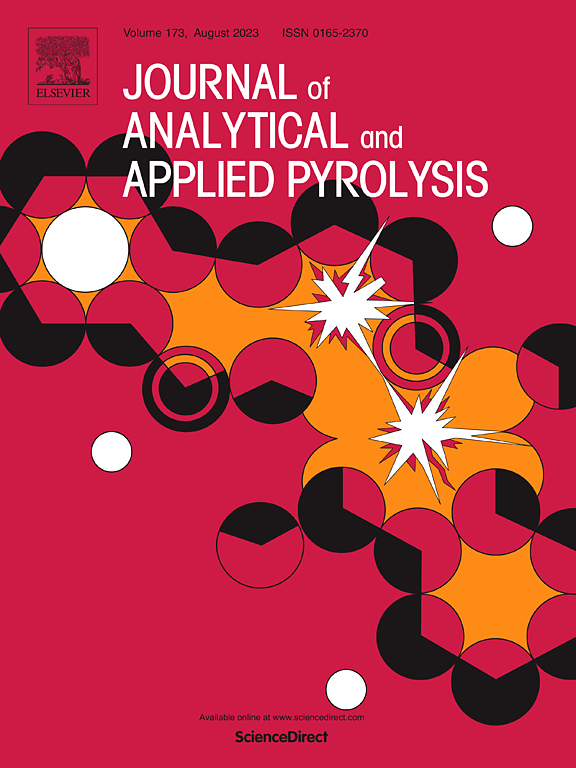Improvement of essential oil yield in the pyrolysis oil of Cinnamomum camphora leaves using a microwave-assisted segment heating method: Product analysis, mechanism and kinetic model
IF 5.8
2区 化学
Q1 CHEMISTRY, ANALYTICAL
引用次数: 0
Abstract
Using a segment heating method, Cinnamomum camphora leaf essential oil yield was improved by a microwave-assisted heating device, with silicon carbide serving as microwave-absorbing heat medium. The effects of temperature segment heating on the essential oil yield were investigated. The mechanism by which microwave-assisted segmented heating enhances essential oil yield in the pyrolysis oil was explored by analyzing the composition of gas and liquid products, as well as the morphology of solid residues after pyrolysis. The results showed that the essential oil using a four-segment heating method (Room temperature–250 °C, 250–300 °C, 300–350 °C, and 350–450 °C) produced the highest yield, reaching 4.40 ± 0.39 %, primarily due to the strategy of keeping the pyrolysis temperature at the boiling point of the essential oil for a period of time. Additionally, leaf cells undergo dual heating from microwave radiation and heat conduction by SiC promoted the rupture of cell walls and vacuoles. Kinetic models were obtained, which have strong consistency between predicted and experimental results, and theoretical maximum yield was significantly higher than that of previously reported. This method will play a crucial role in guiding improvements in plant essential oil yield and is expected to generate substantial economic benefits.
求助全文
约1分钟内获得全文
求助全文
来源期刊
CiteScore
9.10
自引率
11.70%
发文量
340
审稿时长
44 days
期刊介绍:
The Journal of Analytical and Applied Pyrolysis (JAAP) is devoted to the publication of papers dealing with innovative applications of pyrolysis processes, the characterization of products related to pyrolysis reactions, and investigations of reaction mechanism. To be considered by JAAP, a manuscript should present significant progress in these topics. The novelty must be satisfactorily argued in the cover letter. A manuscript with a cover letter to the editor not addressing the novelty is likely to be rejected without review.

 求助内容:
求助内容: 应助结果提醒方式:
应助结果提醒方式:


